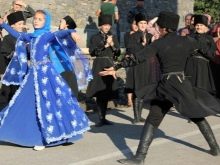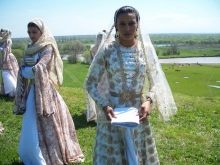Chechen national costume
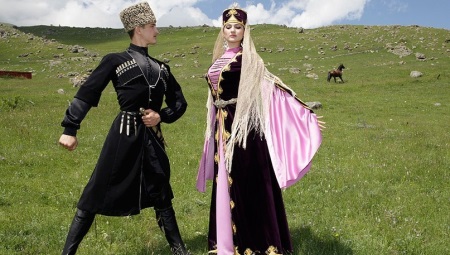
The Caucasus is a very multinational region of Russia. Side by side here various peoples coexist, closely interacting and exchanging the experience accumulated over the centuries.
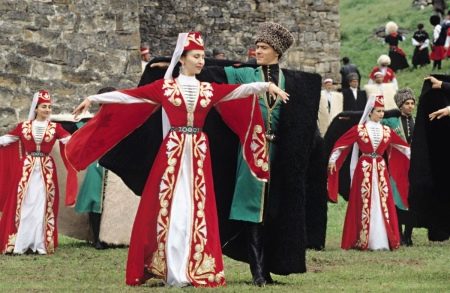
The national Chechen costume is a vivid example of the unique creativity of folk craftsmen, an example of ancient customs, evidence of the deep interaction of the Chechen people with neighboring peoples. The national costume reflected not only the lifestyle of the mountaineers and their traditions, but also spiritual values and faith.
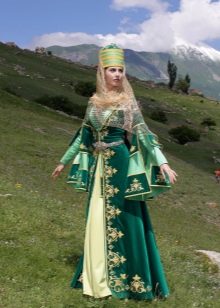
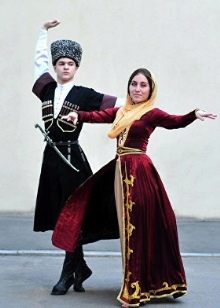
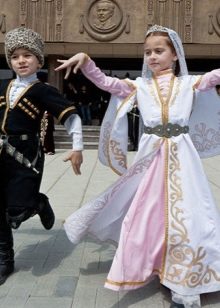
The Chechen people are distinguished by deep respect and reverence for their ancestors, therefore, the national costume is not kept in museums, but rather widely used in everyday life.

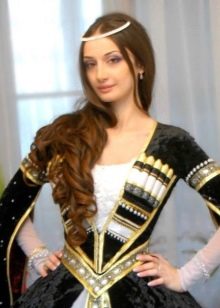
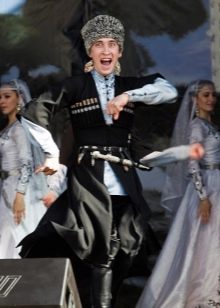
The way of life of the Chechen people is directly related to the materials that have been used since ancient times in the manufacture of national clothes. The fabrics were spun from sheep's wool, and the fur and leather of local animals were widely used.
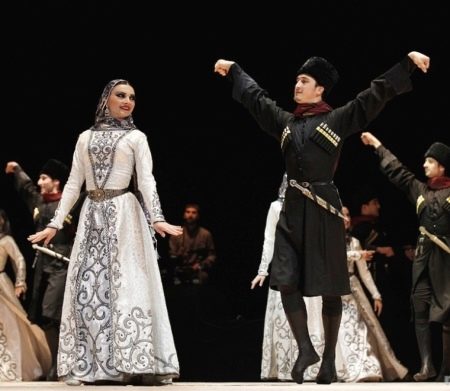
Cloth, felt - everything was of our own production. All costumes were made only by ourselves. Almost every woman knew how to sew or spin. The craftsmanship in the production of national clothes was passed down from generation to generation and was considered a matter of national pride.
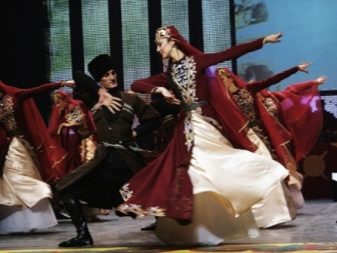

Men's national costume
The main parts of any men's suit were trousers and an elongated semi-caftan (beshmet). The trousers had a cut, tapered from top to bottom, so that it was convenient to tuck them into boots.
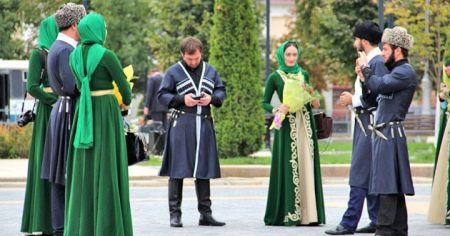
Beshmet is a semi-caftan cut from a light fabric that served as a body shirt. Beshmet tightly hugged the figure of a man to the waist, and below it expanded almost to the knee. This form ideally emphasized the slimness and muscularity of the figure of the Chechen man.On the chest, the beshmet should always be tightly fastened with special knot buttons. The same buttons adorned the cuffs of the tapered sleeves of the semi-caftan.
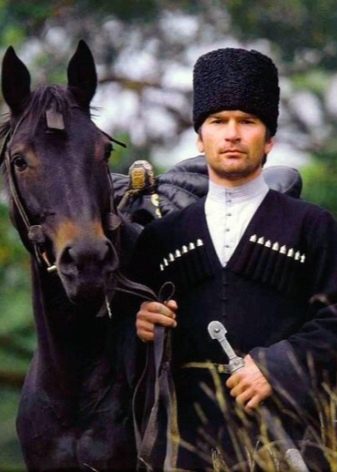
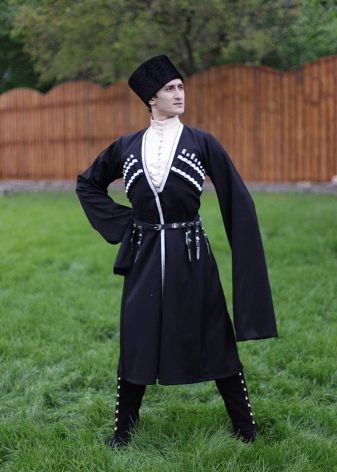
Beshmet was used both as home clothing and as a festive one. The only difference was the fabric used. For the casual version, simple cotton fabric was used, and for the festive one, an expensive multi-colored satin. Despite the tight fit of the beshmet on the figure, it was always comfortable and did not hinder the man's movements. Therefore, such clothes were also used to equip the troops.
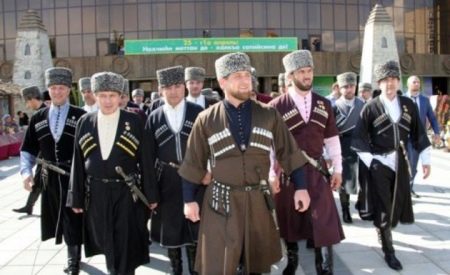
A Circassian coat is a part of a man's suit, similar in appearance and cut to a beshmet. The Cherkesska served as a festive clothing, therefore it was always made of more expensive materials. Usually the best quality cloth was used. Cherkesska was worn over the beshmet, repeating its shape. Narrow down to the waist, it widened downwards and covered the knees. Unlike beshmet, the Circassian coat was fastened only at the belt.

The most interesting part of this garment was the gas boxes, which were located on both sides of the chest. They served to store spare cartridges. Currently, there is no longer a need for the direct purpose of this detail, however, it is still present as a decoration for clothing.
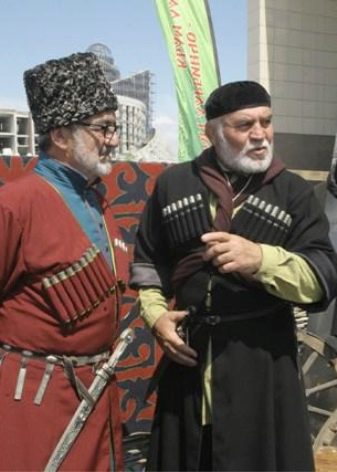

A distinctive part of a man's suit is a burka. The burka is a sleeveless felt cloak with firm, tapered shoulders. She was an integral companion of shepherds, warriors, travelers. Newborn boys were always first wrapped in a burqa so that in the future they would grow up to be real highlanders.
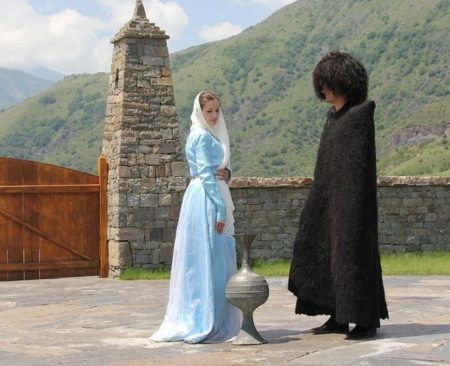
The burka was made only by women, and only the best of the craftswomen possessed this right. Only high-quality sheep's wool was used for the production.
The value of the burka can hardly be overestimated. In unpredictable highland conditions, this warm and windproof raincoat served as clothing, bedding, and blanket.
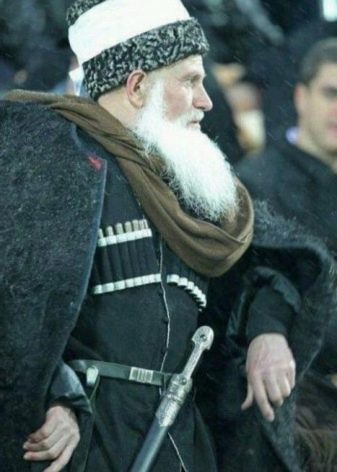
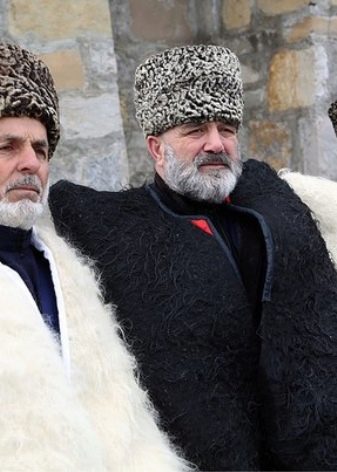
The traditional costume was complemented by a hat - a papakha, and leather boots to the knee, where men tucked their boots. The papakha is a symbol of honor and dignity of a Chechen man. It was made from natural sheepskin. She could be long-haired or short-haired (astrakhan). The hat was inherited, and if a man did not have sons, then the hat was handed over with great respect to the most respected man of the family.
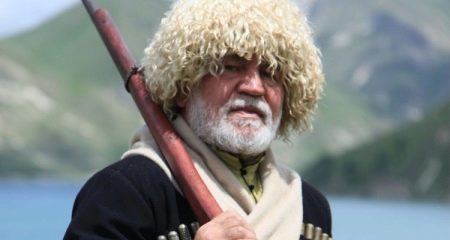
It is forbidden to touch someone else's hat so as not to offend the owner. It is interesting that in some cases the hat could replace a young man on a date. A friend, taking the groom's hat, could replace him with a meeting with a girl. And she could talk to him as if she were her beloved.
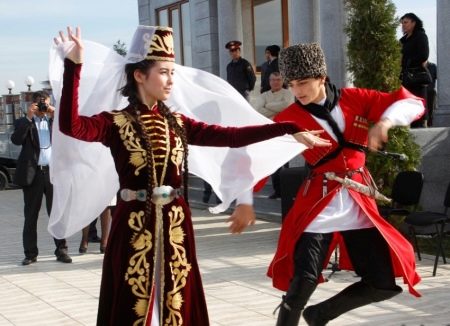
Hats are still the constant headdress of Chechens, having withstood the pressure of modern fashion.
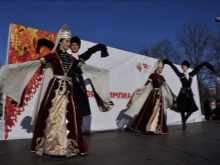
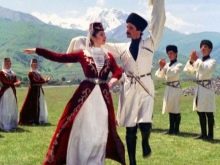

A leather belt was also an obligatory element of the costume. Decorated with metal inserts, it was used to carry edged weapons or firearms.
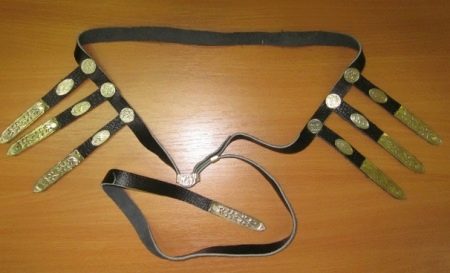
Women's national costume
A Chechen woman is modesty, chastity and beauty itself. Girls never show their bodies to prying eyes. This behavior is reflected in the cut of the traditional costume.
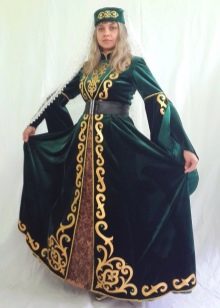
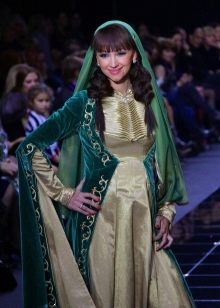
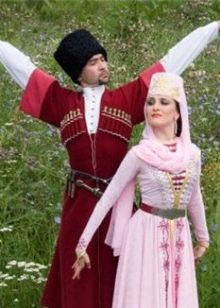
Women's costume is very diverse in color. Older women wear clothes of calmer tones, while girls wear dresses of a wide variety of colors and shades, adorned with gold and silver threads and expensive stones.

Women's outfit consists of four obligatory parts.

Bottom dress
It had the shape of a tunic and fell down to the very ankles. Narrow down to the waist, it flared slightly at the bottom, forming light flowing folds. There was a small cutout on the chest, and a stand-up collar with a small button covered the neck. The underwear has always been distinguished by very long sleeves that reach to the tips of the fingers.

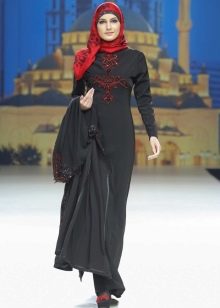
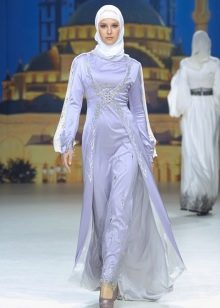
Such a dress was allowed to be worn with loose trousers and to go out freely, naturally, complementing the suit with an appropriate headdress.
The underwear was modest, and women used special bibs to decorate. They were ordered from craftsmen and worn sewn to the top of the tunic. Silver and gold threads, as well as precious and semi-precious stones were used for decoration. The appearance of the bib reflected the material well-being of the family.
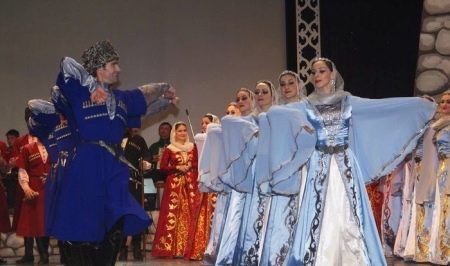
Top dress
It looked like a caftan or a long robe. It did not have a collar and opened the chest so that the beautiful bibs were clearly visible. At the waist, it was fastened with small hooks, as a result of which the female figure acquired a very feminine shape.
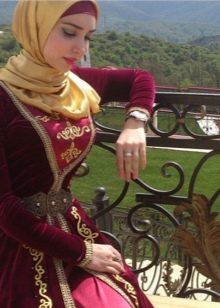


The top dress was very beautiful. The most expensive and beautiful fabrics were used - brocade, morocco, silk, satin, velvet. It was decorated with luxurious embroidery, stones, beads. The hem of the skirt parted like two petals, which gave the outfit more grace.
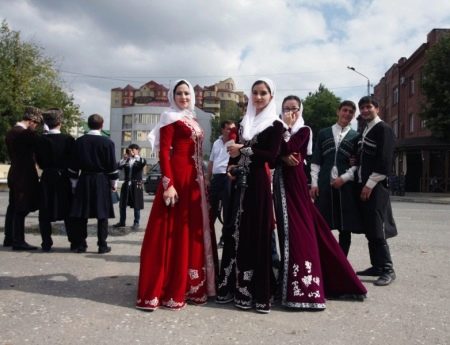
Such an outfit was typical only for young girls, and adult women dressed more modestly.
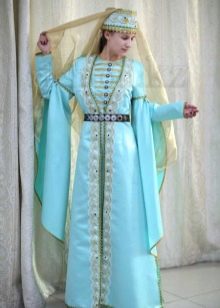
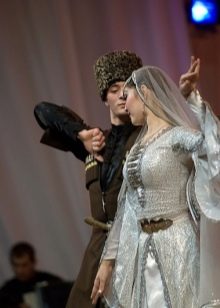
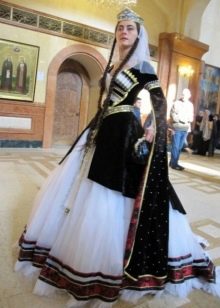
Handkerchief
The head of the Chechen woman was necessarily covered with either a scarf or a light shawl. After marriage, the girls put on a special bag where they put their hair - chukhta. A headscarf was as important to a woman as a hat was to a man. He symbolized purity and chastity.
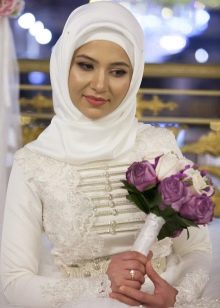
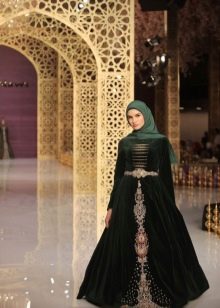

Belt
The belt for the woman was very important. Silver, gold, precious stones were used for him. It was passed on by inheritance, and mothers gave the first belt to their daughters before the wedding.

